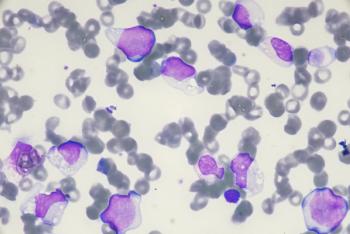
Volume to value: A successful hospital's 5 best practices
Phoenix Children's Hospital's leadership team looked at how the foundational practices of accountable care could be implemented at the pediatric level. Here's what they found.
MeyerThe recent Supreme Court decision on the Affordable Care Act (ACA), upholding federal subsidies for consumers purchasing insurance through exchanges, solidified the law’s reach and impact across the healthcare sphere. Chief Justice John Roberts’ statement that, “Congress passed the Affordable Care Act to improve health insurance markets,” points to the fundamental issue in medical care today: How can health providers deliver the quality of care that patients deserve and demand, while controlling the cost curve?
While the ACA primarily focused on the adult population, the considerations of cost and quality are not lost on those serving in the pediatric realm. In reality, the issues are just as acute, particularly for pediatric hospitals that operate as independent entities.
Since 2002,
Toward the achievement of these goals, Phoenix Children's realized as an institution that a fundamental change was necessary to adapt to the shifting landscape, particularly as the ACA instituted new regulations, mandates and criteria to achieve its access and affordability charge.
Related:
The hospital's leadership team looked at how the foundational practices of accountable care, including improving quality outcomes and focusing on population health management to control costs, could be implemented at the pediatric level, by delivering on transparency, quality, and efficiency.
Initially this approach was hospital-centric, a methodology based on moving from the traditional fee-for-service model to value-based contracting, which distributes the savings associated with improved outcomes. But Phoenix Children's saw even greater potential by encompassing the entire continuum of care. By doing so, it realized that the scope and scale of benefits could be significantly expanded.
The hospital found that 92% of all care interactions occurred outside the hospital; an insight that pushed it to incorporate the breadth and depth of assets and competencies across its infrastructure.
The result is
Started in 2013, PCCN is a pediatric clinically integrated organization (CIO). Its members include more than 800 providers. More than half of all general pediatricians in metro Phoenix are members, as are the majority of pediatric subspecialists.
The model moves from a volume-driven, fee for service orientation that creates inefficiencies and wastes resources, to a synergistic system that rewards and incentivizes added value for the patient family, employers sponsoring coverage, and the payer. Providers in the network are financially compensated to maximize savings while delivering efficient and high quality outcomes.
As a system of care, the CIO defines integration and alignment across the network, which offers cost effectiveness, and consistent care. Further, it requires uniform standards for care delivery, including evidence-based, standardized clinical protocols. Additionally, reporting mechanisms; physician and partner collaboration and communication platforms; and metric tracking all work in conjunction to create a cohesive system of care.
Related:
Here are some best practices utilized by Phoenix Children's Hospital, which was recently named a 2015-16
- Accountable care practices are transitional to pediatrics however; pediatric care has fundamental fiscal and operational challenges that require modifications specific to the segment.
- The success of the CIO depends on the complete buy-in from physician and network partners. To that end, PCCN developed a physician governance approach; particularly interesting given that the majority of the providers across the system are independent.
- Incentives for quality and affordable care are based on metrics that the physicians develop in concert with PCCN leadership. The fundamental idea is to align high standards for quality and outcomes with consistently increasing benchmarks of excellence. Improvements and achievement of these results is rewarded with a cost-sharing design.
- Specifically, PCCN has developed standards for quality, safety and transparency across 14 initial primary pediatric physician care metrics, with 34 measures targeted for pediatric specialists.
- Lastly, the need for a comprehensive, holistic IT infrastructure to coordinate communication, track data, facilitate integration, and manage cost and value options is critically essential. As eHealth and telemedicine become imbedded in systems of care, IT will play an ever-growing importance in productivity and efficiency.
A system of care model utilizing a CIO is an effective strategy for delivering on the necessities of high quality care and cost control in the pediatric sphere. The Affordable Care law certainly has altered the financial and operational landscape, but what has not changed is the commitment to excellence in care by stakeholders across the healthcare spectrum.
Robert L. “Bob” Meyer serves as chief executive officer for Phoenix Children’s Hospital, recognized as a leading children’s hospital for its high volume and quality care. Located in Phoenix, Phoenix Children’s is one of the country’s largest and busiest children’s hospitals, with 385 licensed beds and a medical staff of nearly 1,000 practitioners across 75 pediatric specialties.
Newsletter
Get the latest industry news, event updates, and more from Managed healthcare Executive.





















































